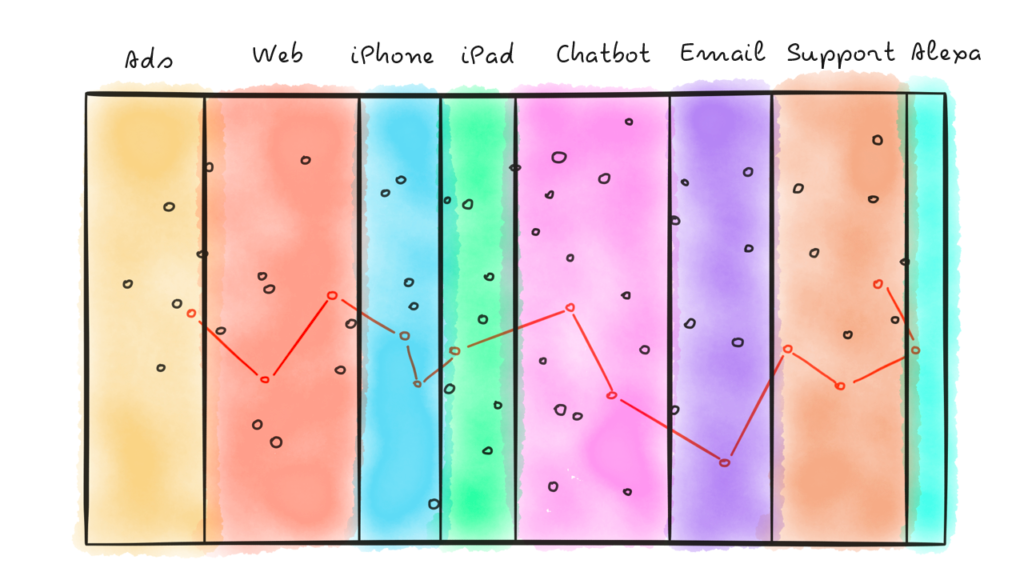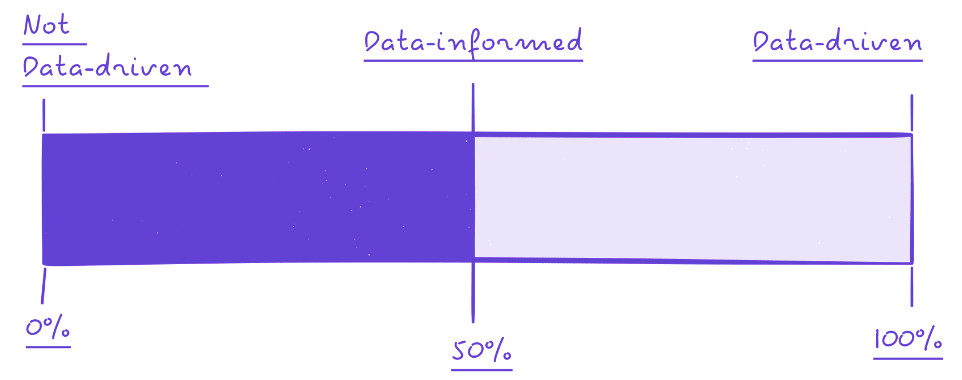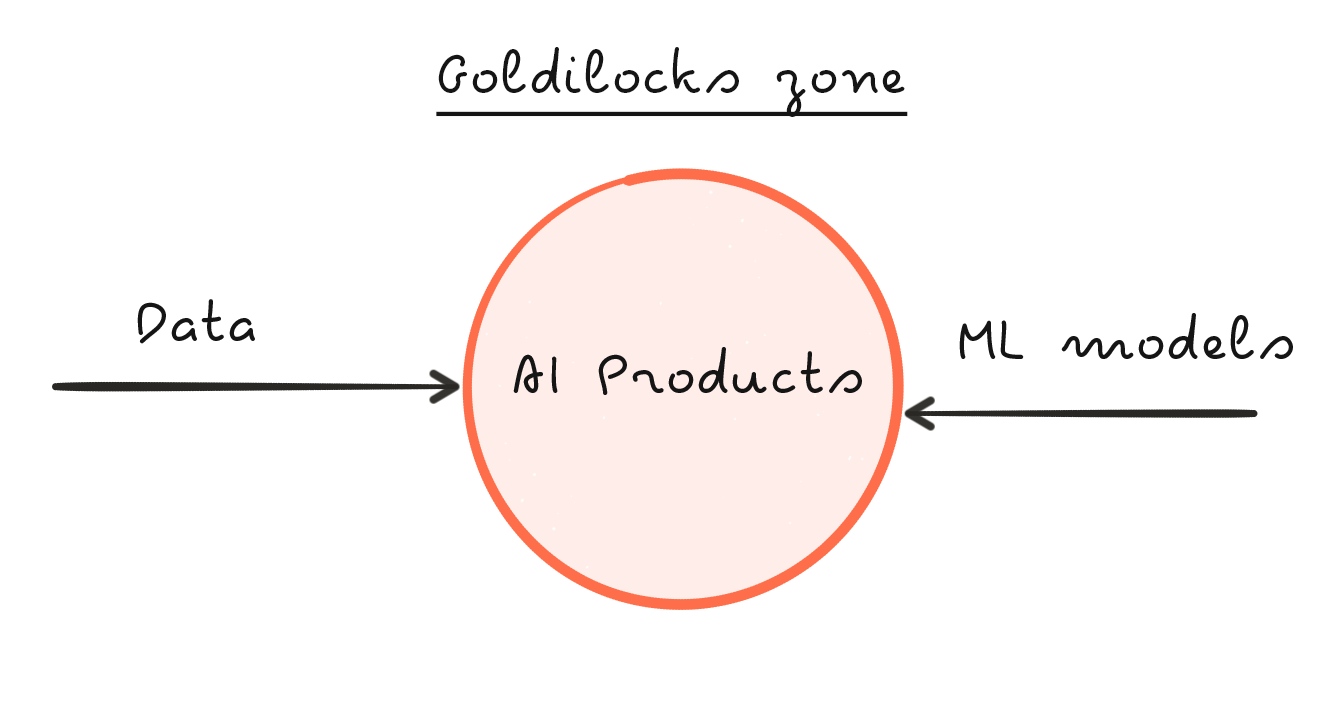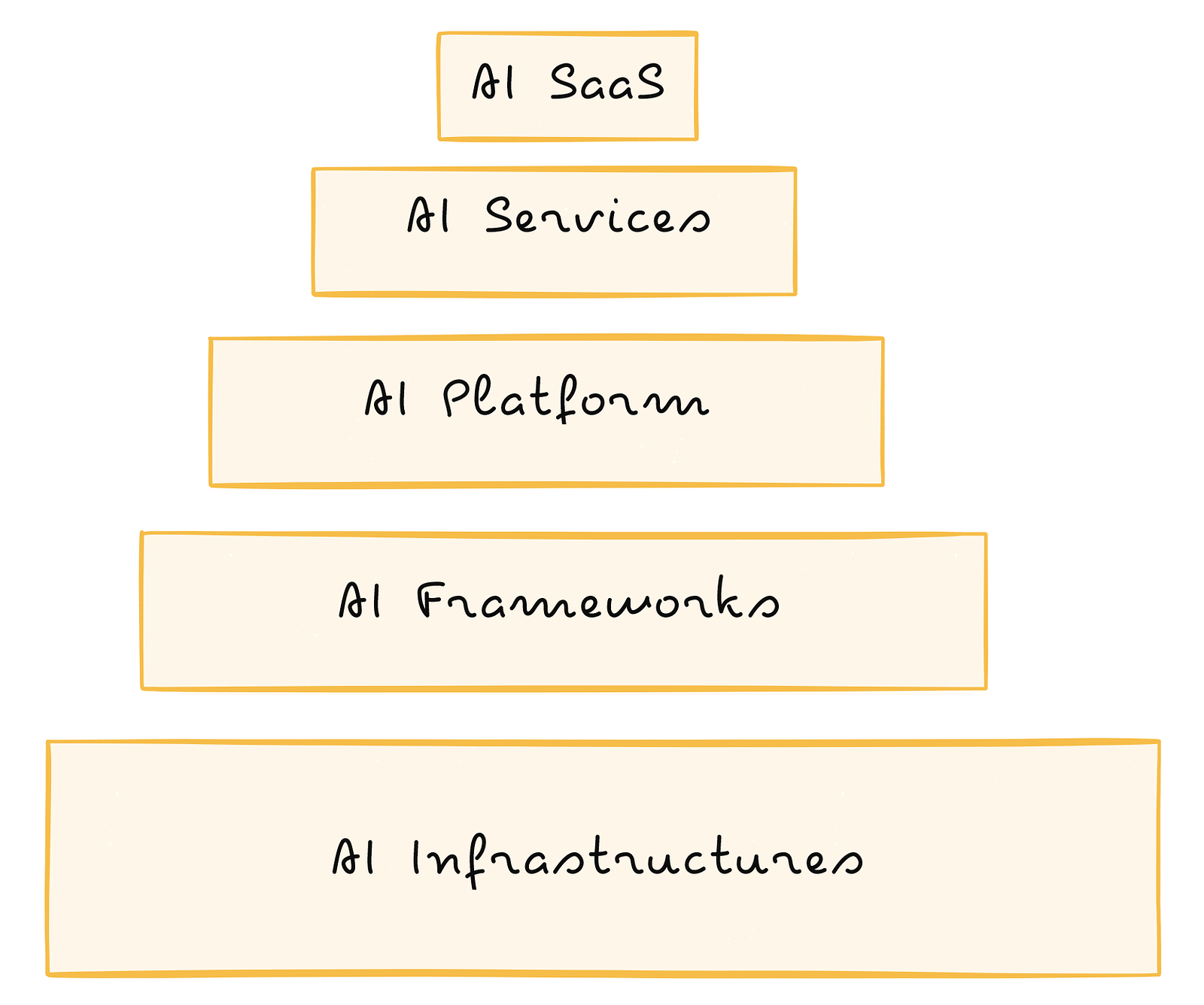AI implications on marketing and analytics
In his annual letter to shareholders, Jeff Bezos wrote:Big trends are not that hard to spot (they get talked and written about a lot), but they can be strangely hard for large organizations to embrace. We're in the middle of an obvious one right now: machine learning and artificial intelligence.
We're probably not yet in the middle. We're just getting started in shaping up the next industrial revolution with AI. This post is a deep dive into the why and the how Analytics and Marketing SaaS products will use Artificial Intelligence.
Even if I didn't plan to correlate the two, this post almost comes as a natural follow-up to what I wrote last week. You can read my last post here: The Modern SaaS stack and the Unexploited Amount of data.
Today's Marketing and Analytics Landscape
In the mid-2000's, the digital media ecosystem — born from the traditional publishing industry — began to transform. Back to those days, the world was web-centric. Today's world not only is not anymore web-centric because people consume more time than ever on their mobile devices, but it's constantly evolving. The shift we've been recently witnessing, from a GUI-driven world towards a CUI world (Conversational User Interface) with new devices like Amazon Echo and Google Home is proof of that.At this year's F8 conference, Facebook revealed the intention to double down on his Messanger Platform.
"Our goal at Facebook is not to launch a bunch of bots, but make businesses successful on Messenger and give them the ability to communicate with customers." Chudnovsky
"How do you go about it? That's where bots come in — it's not the end, but the means to an end. Bots are there to make sure threads between businesses and people are better. We have the ability to give developers capabilities to build a more successful presence on Messenger so everyone enjoys it."
The way users interact with products is much more different than it was a decade ago. This much more complex landscape (both in terms of user interactions and new distribution channels) leads to an unusual SaaS marketing and analytics products proliferation. The result looks like huge disassembled puzzle.

If you want to have a relevant impact, you need an integrated approach to see what is happening at all customer touch-points and understand how effective you are.
Now, how this has an impact on marketers and analysts?
Most of the today's marketers are soothsayers. Oracles that don't know what they're doing and why they're doing it. But mostly, they don't have a precise idea of the impact they have. This is why Silicon Valley distrusts marketing, demeans it, and devalues the people who practice it. Yet, today's marketers are convinced they're data-driven.
Analysts from the other side of the coin, are good at managing and manipulating data, but lack at finding patterns, coming up with hypotheses, testing them, and taking (or suggesting) actions on the results.
Data Informed ≠ Data Driven
The more SaaS products you use in your stack, the bigger your data volume will be. All your customers' data are siloed in all the tools you're using in your stack.In this post, I've thoughtfully explained the 1-year journey that (almost) every startup does, when it comes down to support marketing and product activities with data.
This is what looks like the final stage after an organization adopted dozens of fragmented tools across their sales, marketing, product, customers support departments.

To perform analysis on your data this is the sad and long carousel you have to take. First (1) extract the data sources siloed in each one of the SaaS product in your stack, second (2) merge those data with your OLAP] and OLTP data, third (3) merge those data with your clickstream data. Cluster your data and create some charts on a BI tool (4).
Et voilà, you (think) you're done!
Bad news, you're only half-way. Yes, you've checked the Data-Informed point, but it takes another 50% for you to have a sense of what the word data-driven really means.

There is still a long way to go. This is just half of the job.
How can modern organizations bridge that gap?
Turning Data into Actions
We are experiencing an historic moment where we have more data than ever. We are overwhelmed by data. Yet, although the data volume continues to burgeon, companies often struggle to harness it. Indeed, the way they take decisions isn't really changed over the past decade. We're not able to use the data we have. Or at least, we use data, but they do not influence our decision as one might expect.While the SaaS tools diversification and the data fragmentations we've analyzed before, lead to a lot of inefficiencies and time-consuming operations, what most of the companies don't understand is the fact that collecting, merging, and clustering data is not the hard part. That's only the first — I would argue, easy — step.
Identifying patterns that enable you to make the right decisions at the right time is what could really make the difference.

Data-savvy companies like Amazon, Google, and Netflix have learned to master data to drive decisions. One of my favorite anecdotes is from Netflix.
In the television business, there is no such thing as a sure thing. Tastes and trends are always changing. At the time when Netflix decided to produce the series 'House of Cards', they had 33milions subscribers.
With millions of data points (e.g. when someone presses play, when someone presses pause, what parts they skip, what parts they watch again), they understood how big the interest is going to be for a given show, with a given cast of actors, at any given time.
Netflix knew 'House of Cards' would be a hit before anyone shouted "action".
Using data, Netflix understood how to retain their best customers and attract more like them. What content drives loyalty, what reduces churn and what drives new subscriptions.
The rush towards AI Marketing and Analytics Products
Massive data volume generated from a side. The inability to decipher that data chaos and pull out actionable insights from the other side. This is where Artificial Intelligence comes in as a connecting link.One of the techniques widely used to reach Artificial Intelligence is Machine Learning.
Machine learning relies on two key elements: algorithms and data sets to train those algorithms.
When products with access to proprietary datasets meet advanced algorithms, the magic happens.

All SaaS companies that are able to generate a good amount of data, at a certain point will integrate AI into their products.
What we're going through right now, is a discovery moment where startups want to use AI to better serve their customers. Soon we'll reach out the moment where startups will need AI either to meet customer needs or new needs that can't be met without AI.
The shift between the want-phase and the need-phase will be facilitated by the adoption of the cloud as a more flexible and cost-effective approach. Cloud providers like Amazon are moving fast to provide the AI full-stack. From AI services like Amazon Rekognition, Amazon Polly, Amazon Lex to AI platforms like Amazon Machine Learning and Amazon EMR.

Artificial Intelligence impact on marketing and analytics jobs
Every time I read articles on AI destroying and/or replacing jobs I always think to Sir. William Lee.William Lee was an English inventor lived in the early 1600s. He built his fame on top of to the first stocking frame knitting machine. Lee's machine has been used for centuries even after his death.
But when he submitted his invention to the Queen, she declined to issue a patent on the grounds that the technology might cause unemployment among textile workers. He has been refused by Elizabeth's successor James I for the same reason.
Artificial Intelligence will erode demand for some marketing skills but will increase the demand for others
While a lot of marketing and analytics operations will be automated (e.g. identifying your target keywords, optimizing your ad budget for Adv platform, setting up your ROI metrics in Google Analytics, etc..) others will be created.
The future of Marketing and Analytics is Powered by AI
We are entering a new golden age of marketing.The future is a diverse and modern marketing team, made up of the clever analytical marketer who uses big data to make smarter decisions, and technology will facilitate this change.